Title : Impact of Wuchereria bancrofti infection on cervical mucosal immunity and human papillomavirus prevalence in women from Lindi and Mbeya regions, Tanzania
Abstract:
Introduction: Wuchereria bancrofti (WB) is a mosquito-borne pathogen that causes lymphatic filariasis. However, WB is not known to cause lesions in the genital mucosa. We had previously described an increased incidence of HIV in individuals infected with WB. To investigate the augmented susceptibility to HIV, we compared T cell phenotypes between WB+ and WB-women.
Methods: Sixty-two women underwent screening for cervical cancer and PCR testing for human high-risk papillomavirus (HR HPV). Flow cytometric analysis of activation and differentiation markers on CD4 T cells as well as HIV entry receptor CCR5 was performed on cervical and peripheral blood samples of 54 women living without HIV (WLWoH), 28 of them infected with WB.
Results: WB infection was associated with significantly increased frequency of CD3+γδ2+ T cells in the cervical mucosa (median 4.01% vs 1.36%, p=0.012). Contrary to our expectations, we tended to find lower frequencies of CCR5 on total CD4, memory CD4 T cells and activated memory CD4 T cells in the WB+ group compared to the WB- women. However, this was no longer apparent after age and site of recruitment were taken into account. Prevalence of HR-HPV was 38.5% (5/13) in WLWH, 37.0% (10/27) in WB+ WLWoH and 14.0% (3/22) in WB- WLWoH. The multivariable regression analysis showed that WB and HIV infections were associated with a 3.8- and 3.2-fold increase in HPV risk, respectively (WB status: p=0.058; HIV status: p = 0.057).
Conclusion: WB infection is associated with an increase in the expression of CD3+γδ2+ T cells, suggesting an immunological mechanism by which WB infection increases the risk for other infections, albeit independent of the CCR5 receptor. Furthermore, WB and HIV infections independently showed a trend towards an increase in the prevalence of HR HPV infection.


